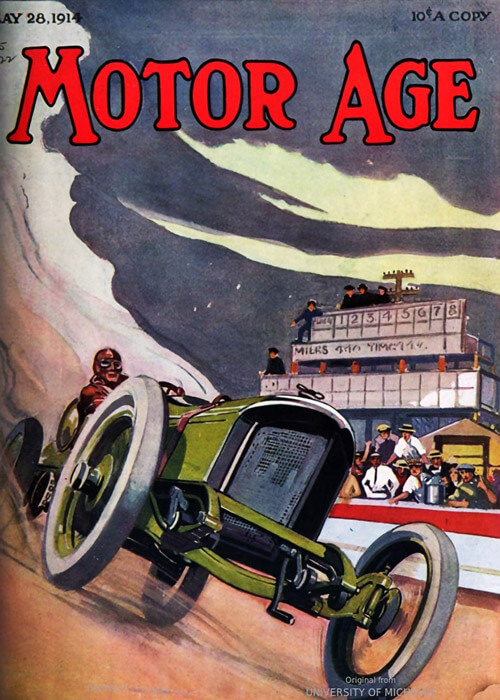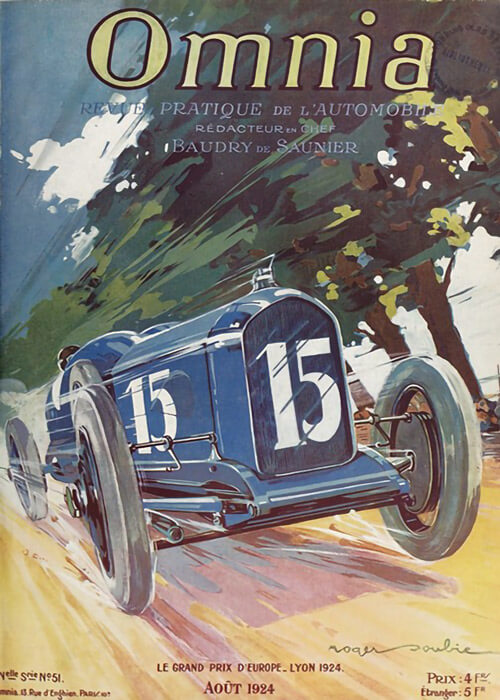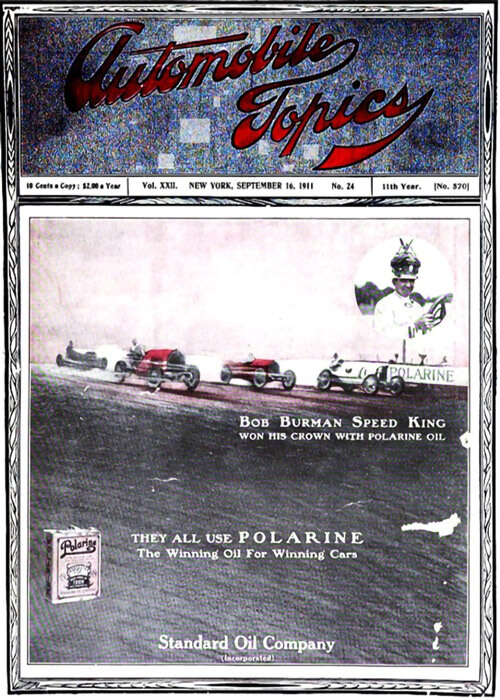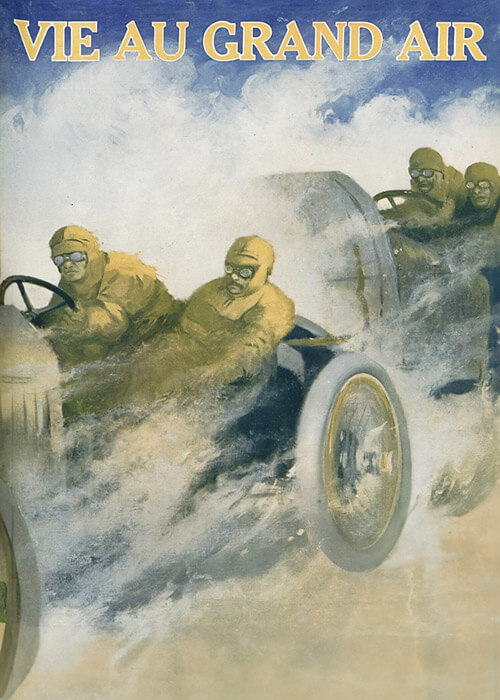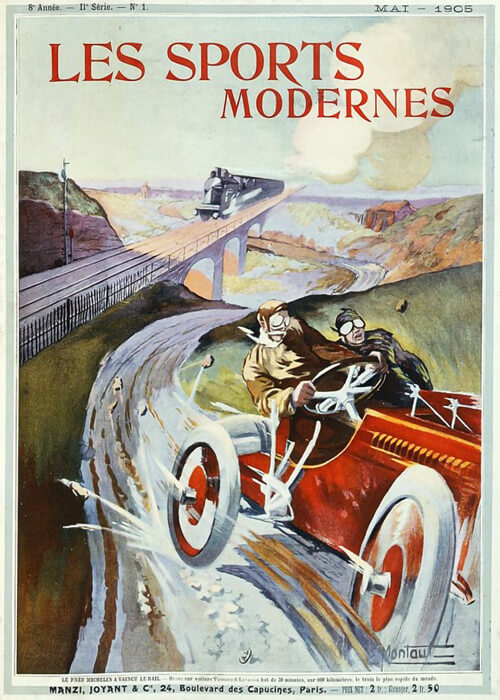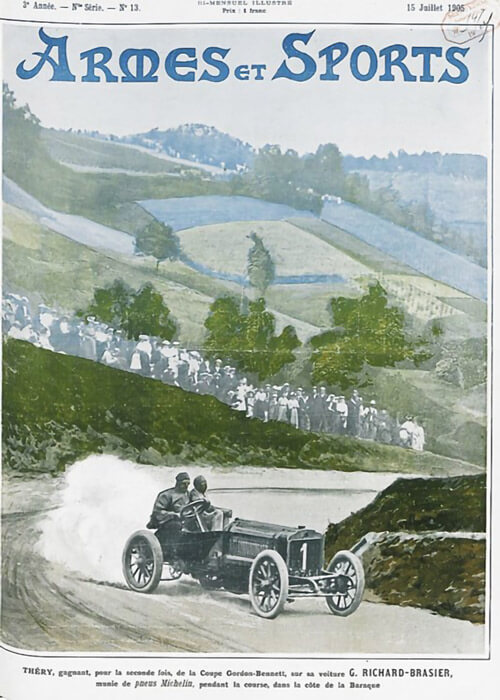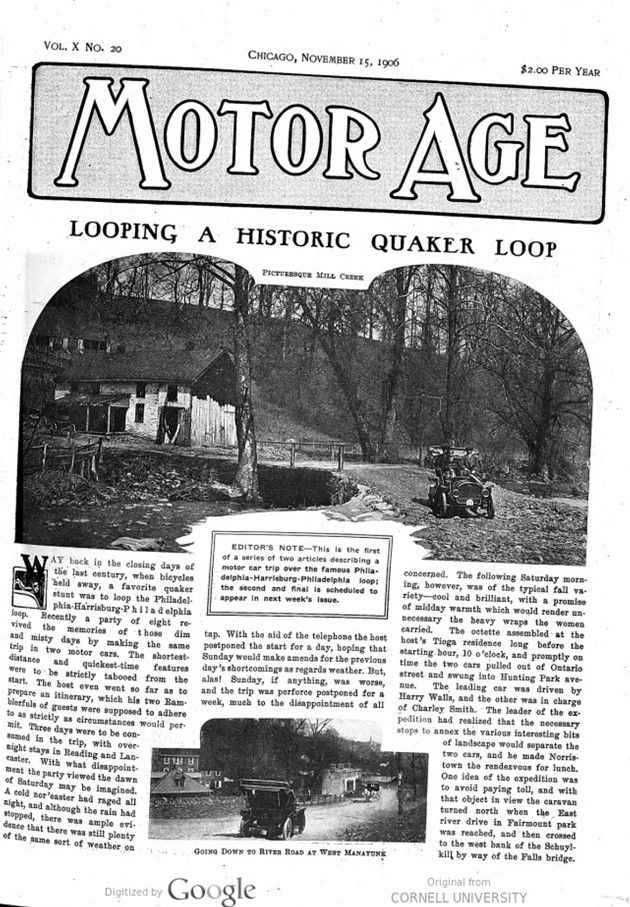
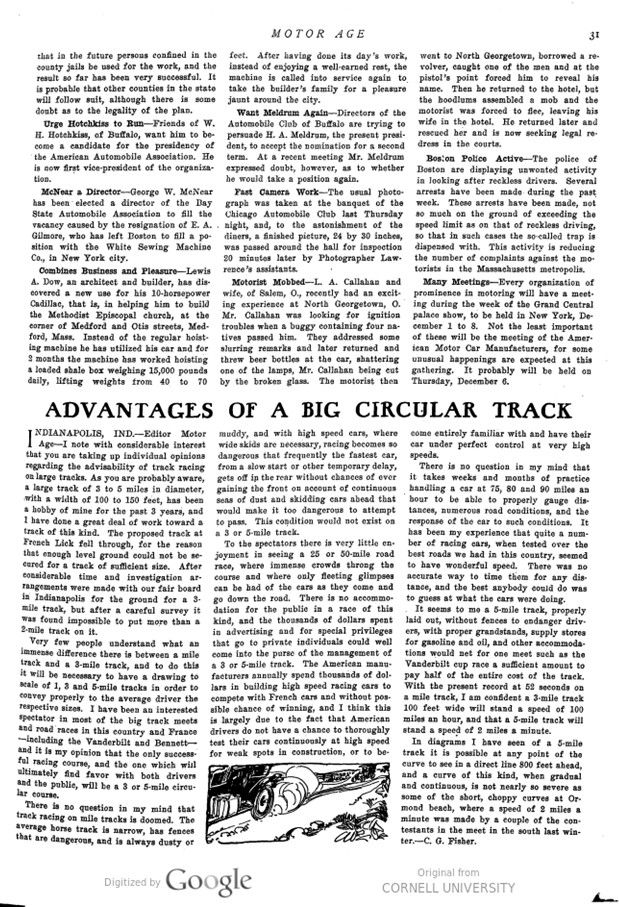
This short and seemingly unspectacular article on the lowside of one of the last pages in Novembers‘ Motor Age may be considered as the birth certificate of the Indianapolis Motor Speedway.
Text and jpegs by courtesy of hathitrust.org www.hathitrust.org, compiled by motorracinghistory.com
Motor Age Volume X, No. 20, November 15, 1906, p. 31.
Advantages of a Big Circular Track – Carl G. Fisher.
INDIANAPOLIS, IND. — Editor Motor Age — I note with considerable interest that you are taking up individual opinions regarding the advisability of track racing on large tracks. As you are probably aware, a large track of 3 to 5 miles in diameter, with a width of 100 to 150 feet, has been a hobby of mine for the past 3 years, and I have done a great deal of work toward a track of this kind. The proposed track at French Lick fell through, for the reason that enough level ground could not be secured for a track of sufficient size. After considerable time and investigation arrangements were made with our fair board in Indianapolis for the ground for a 3-mile track, but after a careful survey it was found impossible to put more than a 2-mile track on it.
Very few people understand what an immense difference there is between a mile track and a 3-mile track, and to do this it will be necessary to have a drawing to scale of 1, 3 and 5-mile tracks in order to convey properly to the average driver the respective sizes. I have been an interested spectator in most of the big track meets and road races in this country and France —including the Vanderbilt and Bennett— and it is my opinion that the only successful racing course, and the one which will ultimately find favor with both drivers and the public, will be a 3 or 5-mile circular course.
There is no question in my mind that track racing on mile tracks is doomed. The average horse track is narrow, has fences that are dangerous, and is always dusty or muddy, and with high speed cars, where wide skids are necessary, racing becomes so dangerous that frequently the fastest car, from a slow start or other temporary delay, gets off in the rear without chances of ever gaining the front on account of continuous seas of dust and skidding cars ahead that would make it too dangerous to attempt to pass. This condition would not exist on a 3 or 5-mile track.
To the spectators there is very little enjoyment in seeing a 25 or 50-mile road race, where immense crowds throng the course and where only fleeting glimpses can be had of the cars as they come and go down the road. There is no accommodation for the public in a race of this kind, and the thousands of dollars spent in advertising and for special privileges that go to private individuals could well come into the purse of the management of a 3 or 5-mile track. The American manufacturers annually spend thousands of dollars in building high speed racing cars to compete with French cars and without possible chance of winning, and I think this is largely due to the fact that American drivers do not have a chance to thoroughly test their cars continuously at high speed for weak spots in construction, or to become entirely familiar with and have their ear under perfect control at very high speeds.
There is no question in my mind that it takes weeks and months of practice handling a car at 75, 80 and 90 miles an hour to be able to properly gauge distances, numerous road conditions, and the response of the car to such conditions. It has been my experience that quite a number of racing cars, when tested over the best roads we had in this country, seemed to have wonderful speed. There was no accurate way to time them for any distance, and the best anybody could do was to guess at what the cars were doing.
It seems to me a 5-mile track, properly laid out, without fences to endanger drivers, with proper grandstands, supply stores for gasoline and oil, and other accommodations would net for one meet such as the Vanderbilt cup race a sufficient amount to pay half of the entire cost of the track. With the present record at 52 seconds on a mile track, I am confident a 3-mile track 100 feet wide will stand a speed of 100 miles an hour, and that a 5-mile track will stand a speed of 2 miles a minute.
In diagrams I have seen of a 5-mile track it is possible at any point of the curve to see in a direct line 800 feet ahead, and a curve of this kind, when gradual and continuous, is not nearly so severe as some of the short, choppy curves at Ormond beach, where a speed of 2 miles a minute was made by a couple of the contestants in the meet in the south last winter. — C. G. Fisher.
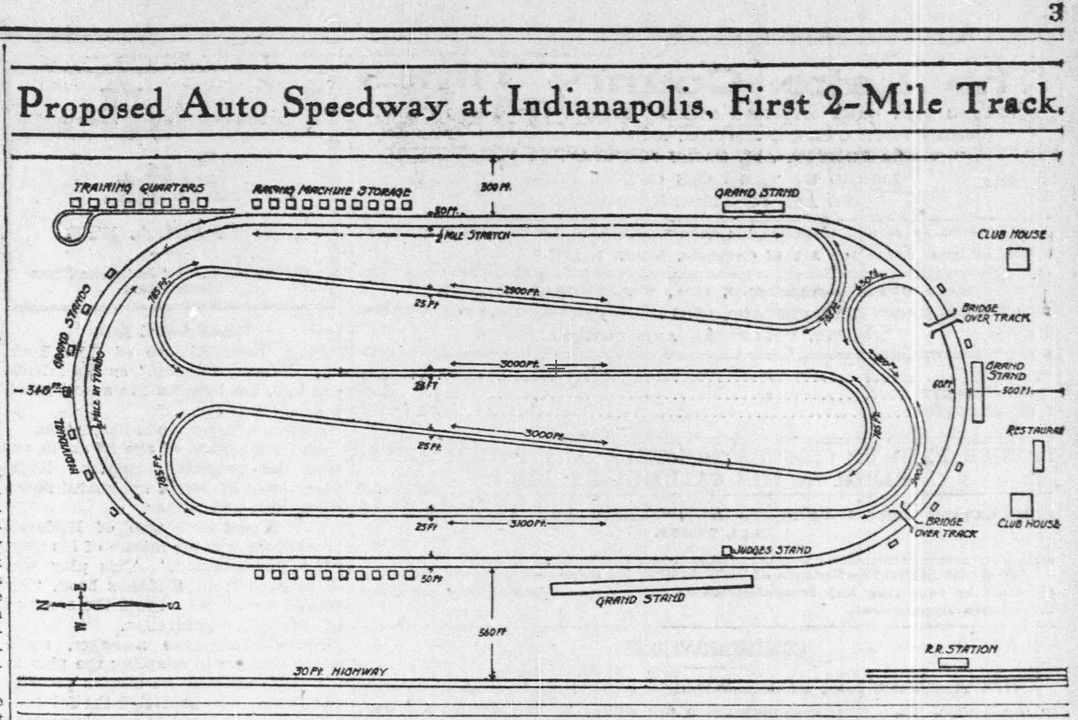
Source: Hammond Times

Source: Arizona Daily Star
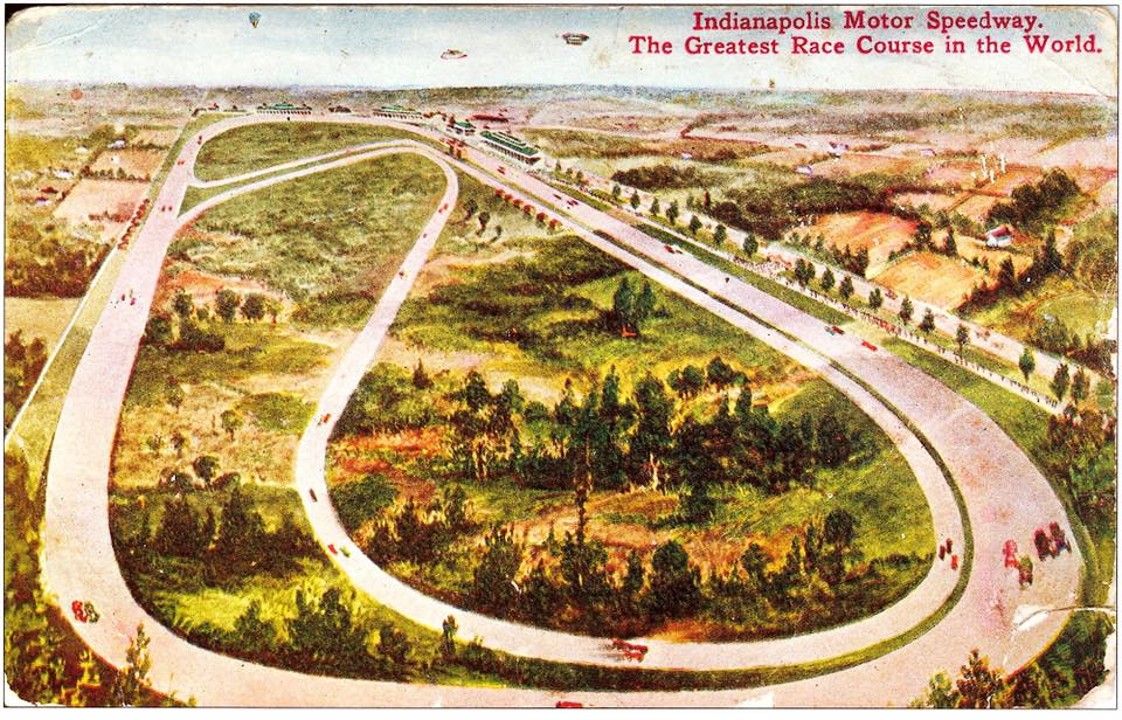
Source: International Motor Speedway.
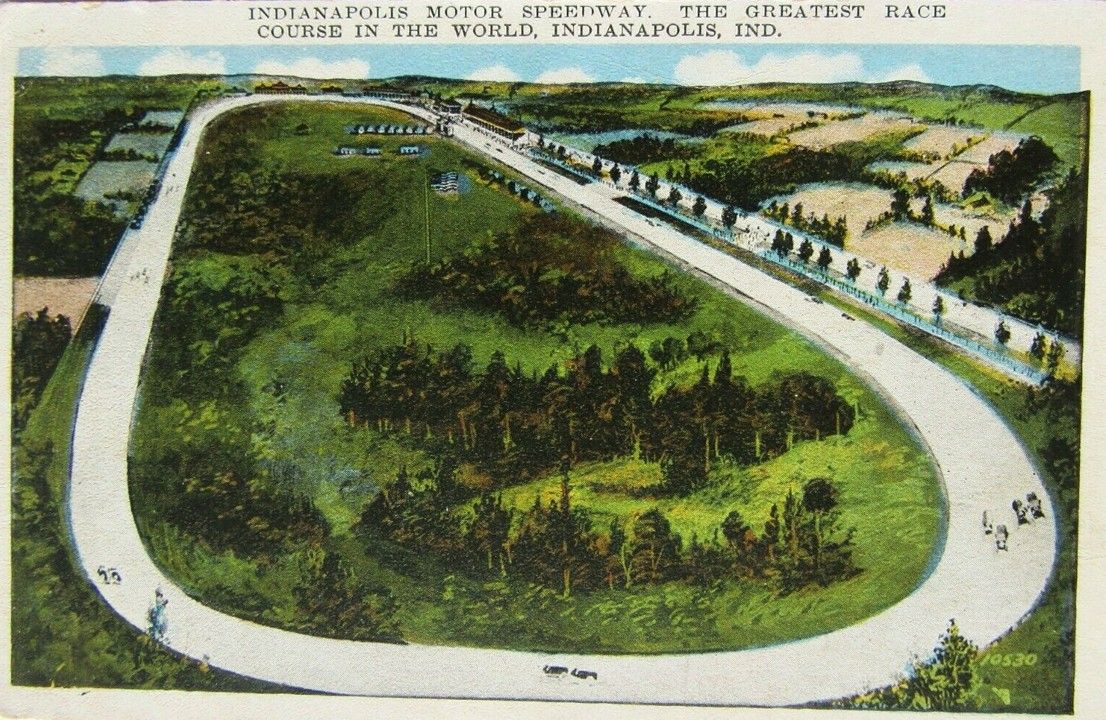
around August 1909. Source: ebay
